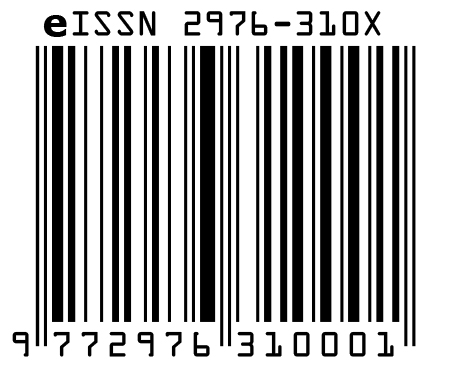The Effect of Video Presentations on Achieving Academic Performance Among ESL Students in Malaysia
DOI:
https://doi.org/10.60072/ijeissah.2022.v1i01.005Abstract
Technology is an important part of education, and when used correctly, it can help students learn languages well. Technology's impact on education has had a significant impact on how English as a Second Language (ESL) is taught. Malaysia seeks to develop well-educated individuals. To adequately explain this phenomenon, the Malaysian Ministry of Education has coined the phrase "bilingual proficiency"(MOE). The high demand for communication skills in the twenty-first century places them at the top of the list of desirable soft skills. Video presentations are an excellent tool for enhancing the spoken presentation skills of English language students. The purpose of this research is to determine the extent to which students studying English as a Second Language (ESL) can benefit from making use of video presentations to assist them in achieving their learning outcomes. To highlight the links between the variables, a review of the relevant material was carried out and examined. The outcomes of this study offered a conceptual framework that predicts the relevant aspects that are related to students' use of video presentations in their academia. To verify the validity of this conceptual framework, more empirical research must be carried out.
Keywords:
English as Second Language, Oral Presentation, Communication Skill, Video Presentation, Assessment, OutcomesReferences
Ahmad, n. A. & lidadun, b. P. (2017). Enhancing oral presentation skills through video presentation. People: International Journal of Social Sciences, 3(2), 385-397.
Andersson, c. (2020). Formative assessment–from the view of special education teachers in mathematics. Nordisk Matematikkdidaktikk, Nomad:Nordic Studies in Mathematics Education, 25(3- 4), 73-93.
Anuar, n., muhammad, a. M., daud, n. S. M. & awang, z. (2021). Grit as a moderator between students’ intention and oral presentation performance: A conceptual study. International Journal of Asian social science, 11(6), 270-277
Arsal, Z. (2017). The impact of inquiry-based learning on the critical thinking dispositions of pre- service science teachers. International Journal of Science Education, 39(10), 1326-1338.
Aziz, a. A. & kashinathan, s. (2021). ESL Learners’ Challenges in Speaking English in Malaysian Boudechiche, H. (2020). Video as a Tool of Learning New Skills. Development, 10(2), 983-991.Africana Studia, 1(34).
Brooks, g. & Wilson, j. (2014). Using oral presentations to improve student's English language skills. Kwansei Gakuin University Humanities Review, 19(1), 199-212.
Daniels, m. M. (2021, February). Usability assessment of virtual reality as a training tool for oral presentation. In Iop Conference Series: Materials Science and Engineering (vol. 1077, no. 1, p. 012047). IOP Publishing.
Dilova, n. G. (2021). Formative assessment of students' knowledge–as a means of improving the quality of education. Scientific Reports of Bukhara State University, 5(3), 144-155.)
Fogarty, j., mccormick, j., & el-tawil, s. (2018). Improving student understanding of complex spatial arrangements with virtual reality. Journal of Professional Issues in Engineering Education and Practice, 144(2), 04017013.
Hallemans, n. (2021). Using student-created video presentations to build experiential learning in the oral EFL presentation classroom. Korean Journal of General Education, 15(5), 229-245.
Kalina, C., & Powell, K. C. (2009). Cognitive and social constructivism: Developing tools for an effective classroom. Education, 130(2), 241-250.
Kondal, b., & prasad, v. D. (2020). Effectiveness of video recording towards developing speaking skills. Waffen-und Kostumkunde Journal, XI, 42-47.
Lase, d. (2019). Pendidikan di era revolusi industri 4.0. Sundermann: Jurnal Ilmiah Teologi, Pendidikan, Sains, Humaniora dan Kebudayaan, 12(2), 28–43.
Lase, f. (2019). Using think pair share strategy to improve the speaking ability of the 2nd semester students’of x otkp at smk negeri 1 gunungsitoli barat in 2018/2019. Didaktik: Jurnal Ilmiah Pendidikan, Humaniora, Sains dan Pembelajarannya, 13(2), 2304-2309.
Likita, e. R., maulina, d., & sikumbang, d. (2020). An analysis of biology oral communication skills and cognitive learning outcomes: The impact of practicum-based two-stay two-stray learning model. Biosfer: Jurnal Tadris Biologi, 11(2), 111-120.
Mansor, n., & rahim, n. A. (2017). Instagram in esl classroom. Man in India, 97(20), 107-114. Ministry of education malaysia (moe), malaysia education blueprint 2015-2025, (higher education), Ministry of education malaysia, (2015).
Nasution, m. L., & hafizah, n. (2020, may). Development of students’ understanding of mathematical concept with stad type cooperative learning through student worksheets. In Journal of Physics: Conference Series (vol. 1554, no. 1, p. 012035). IOP Publishing.
Normayanti, e. (2020). Pengembangan lembar kerja peserta didik dengan pendekatan flipped classroom Terintegrasi Stem Pada Materi Difraksi Cahaya Untuk Meningkatkan keterampilan kolaborasi dan komunikasi. Universitas Lampung
Nugroho, a. M., wardono, w., waluyo, s. B., & cahyono, a. N. (2019). Kemampuan berpikir kreatif ditinjau dari adversity quotient pada pembelajaran tpack. Prisma, Prosiding Seminar Nasional Matematika, 2, 40–45.
Rahmanian, m., shafieian, m., & samie, m. E. (2021). Computing with words for student peer assessment in oral presentation. Nexo revista científica, 34(01), 229-241. Singian, e. A. (2018). Ict and students’creativity.
Tailab, m., & marsh, n. (2020). Use of self-assessment of video recording to raise students' awareness of development of their oral presentation skills. Higher Education Studies, 10(1).
























